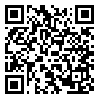Volume 17, Issue 1 (7 2004)
jdm 2004, 17(1): 5-11 |
Back to browse issues page
Download citation:
BibTeX | RIS | EndNote | Medlars | ProCite | Reference Manager | RefWorks
Send citation to:



BibTeX | RIS | EndNote | Medlars | ProCite | Reference Manager | RefWorks
Send citation to:
Bashizadeh Fakhar H, Fatemi Tabar S. An evaluation on the accuracy of the indirect digital images densitometry by modified Photoshop software. jdm 2004; 17 (1) :5-11
URL: http://jdm.tums.ac.ir/article-1-376-en.html
URL: http://jdm.tums.ac.ir/article-1-376-en.html
Abstract: (5935 Views)
Statement of Problem: One of the major goals, in most dental researches, is to measure bone destruction or deposition due to the progression or regression of disease. Failure of human eyes to detect minor radiographic density changes resulted in more accurate methods such as optical densitometry and direct or indirect digital densitometry.
Purpose: The aim of this study was to determine the accuracy of a newly proposed method of indirect digital densitometry using modified Photoshop software.
Materials and Methods: Radiographs from 37 samples of urografin solution with three concentrations (12.5%, 25% and 37.5%) were taken on dental radiographic films no.2 and digitized by a scanner. A region with 800*800 pixels was cropped from each image and compressed with the Joint Photographic Experts Group (JPEG) compression algorithm and saved. These new images were then put into registration with new algorithm using MATLAB software version 6.1. This algorithm assigned each image and average pixel value (between 0 and 255). The association between concentration and calculated values for each image was tested with regression analysis and the meaning fullness of differences between calculated values was also analysis by ANOVA test. Tukey HSD and Alpha Krunbach were used whenever needs.
Results: Regression analysis revealed significant correlation between concentration and calculated average pixel value (r=0.883). The differences between average of pixels value for different concentration was significant (P=0.0001). Pixel values showed a good intra- sample and intra-group repeatability (Alpha Krunbach: a=99.96%, a=99.68%).
Conclusion: This method due to its high accuracy, easy usage and densitometer independency can be considered as a suitable alternative for conventional densitometry methods.
Purpose: The aim of this study was to determine the accuracy of a newly proposed method of indirect digital densitometry using modified Photoshop software.
Materials and Methods: Radiographs from 37 samples of urografin solution with three concentrations (12.5%, 25% and 37.5%) were taken on dental radiographic films no.2 and digitized by a scanner. A region with 800*800 pixels was cropped from each image and compressed with the Joint Photographic Experts Group (JPEG) compression algorithm and saved. These new images were then put into registration with new algorithm using MATLAB software version 6.1. This algorithm assigned each image and average pixel value (between 0 and 255). The association between concentration and calculated values for each image was tested with regression analysis and the meaning fullness of differences between calculated values was also analysis by ANOVA test. Tukey HSD and Alpha Krunbach were used whenever needs.
Results: Regression analysis revealed significant correlation between concentration and calculated average pixel value (r=0.883). The differences between average of pixels value for different concentration was significant (P=0.0001). Pixel values showed a good intra- sample and intra-group repeatability (Alpha Krunbach: a=99.96%, a=99.68%).
Conclusion: This method due to its high accuracy, easy usage and densitometer independency can be considered as a suitable alternative for conventional densitometry methods.
| Rights and Permissions | |
 |
This work is licensed under a Creative Commons Attribution-NonCommercial 4.0 International License. |




